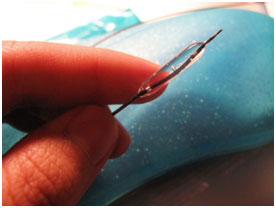The exams
Angioplasty

What is an angioplasty ?
The angioplasty is a medical-surgical intervention generally carried out with local anaesthetic. It is normally prescribed, when the coronary arteries are narrowed (stenosis) during an angiography of the heart vessels, named angiography.
The angioplasty means inserting a catheter into a blood vessel, vein or artery or a patient in order to repair it. A little balloon will be placed in to the artery, then blown up to open it. A sort of dispositive is left in place to ensure a permanent effect. The most often practised coronary angioplasty is by passing the femoral artery.
How is an angioplasty being carried out ?
The angioplasty is an act of interventional cardiology. The operator and his assistant are wearing surgeon clothes and are working in sterile conditions, needed for the introduction of a sterile probe into the artery. The patient will be placed on a angiography table and covered with sterile sheets.
The aim if this dilatation is putting a probe up into the heart passing by :
- Either the femoral artery at the fold of the groin
- Or the humeral artery, which lies in the arm fold
Generally the femoral artery is taken, because of an easier accessibility. It is a simple and painless procedure because of the local anaesthesia, whereby the introduction zone is made numb, so that the probe can be lead up to the heart.
The angioplasty is a palliative technique, which means that it does not intervene against any evolution of the disease, which are linked to the still active cardiovascular risk factors.



